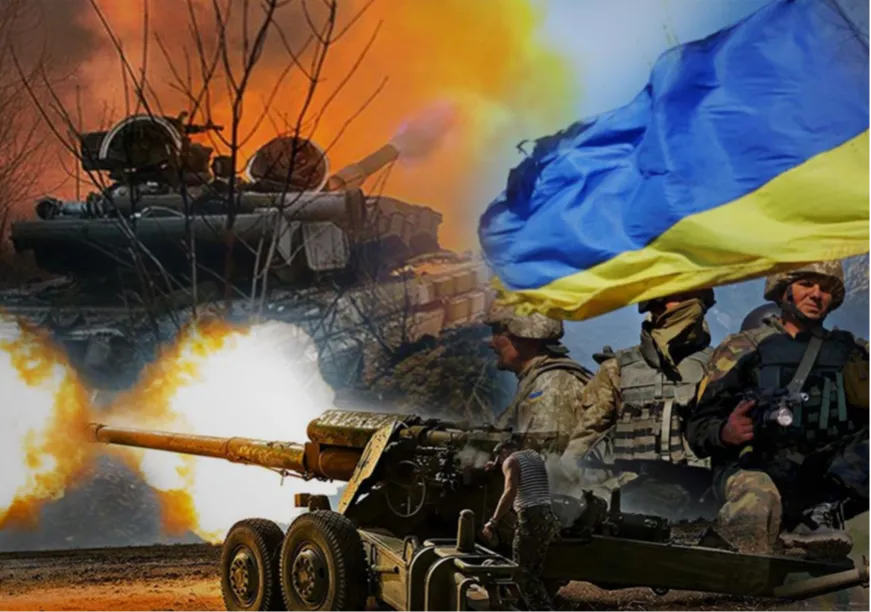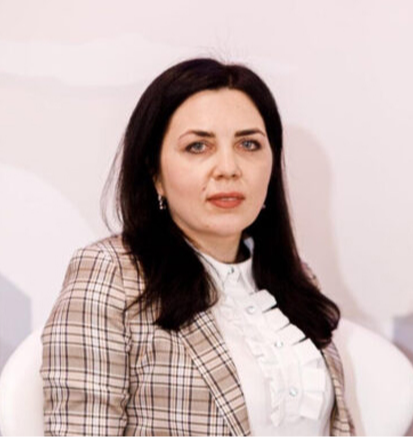-
CENTRES
Progammes & Centres
Location
Ukraine must convince its allies to continue military, financial and other support regardless of a change in power in their governments

Ukraine ended the second year of the war, facing a number of challenges that make the future unclear. Ukraine’s failed counteroffensive and the uncertainty around Western support for Kyiv has given President Vladimir Putin a confidence boost.
Last year did not bring significant military successes to either side. This is why Russia has chosen a strategy of "war of attrition", counting on the West's fatigue in supporting Ukraine. Putin is well aware of the weaknesses of Western democracies, which are vulnerable to the demands of their citizens and, unlike Moscow, cannot neglect their social and economic well-being. This strategy has partly worked— in some European countries, during last year's elections, forces opposing the provision of military aid to Kyiv came to power; and on the border with Ukraine, Polish farmers set up blockades to prevent the free movement of all goods, not only agricultural products.
Putin is well aware of the weaknesses of Western democracies, which are vulnerable to the demands of their citizens and, unlike Moscow, cannot neglect their social and economic well-being.
An additional bonus for the Kremlin is the presidential election campaign in the United States (US). Ukraine became hostage to political debates in the country, as a result of which American congressmen blocked the allocation of a new package of financial assistance. This led to a noticeable lack of weapons on the fronts and the loss of the city of Avdiivka, which Ukraine had held for 10 years. Russia received its first significant territorial gains since the spring of last year after the capture of Bakhmut.
The possible coming to power of Donald Trump casts great doubt not only on further support for Ukraine, but also on the role of the US in the defence of Europe. At the Munich Security Conference, which took place at the end of February, pessimism prevailed. European leaders were forced to simulate a situation where they would have to fight Russia alone, without the participation of the US. In addition to this, European capitals have seriously been considering the risk of a war between the Russian Federation and NATO countries in the near future. To dispel the doom and gloom after Munich, the French president, on 26 February, hosted about 20 European leaders in Paris to "push for support for Ukraine" and has “not ruled out the possibility of sending troops to Ukraine in the future”. Despite this, there is currently no consensus amongst allies in this regard.
European leaders were forced to simulate a situation where they would have to fight Russia alone, without the participation of the US.
The war between Israel and Hamas, attacks by the Houthis, and general global instability has created a favourable conjuncture for Russia, where the Russia-Ukraine war lost attention at the global level as eyeballs dispersed into other conflicts. Timothy Snyder, an American historian of Ukrainian origin, called the current situation a “fragmented world war” . However, the global mainstream does not seem ready to see the interconnectedness of the large number of conflicts, that have started one after the other in recent times, as a global hybrid war.
The current situation causes great anxiety in Ukraine. President Zelenskyy emphasised that he considers the preservation of American support to be a key issue, both from the point of view of the allocation of the financial assistance package and the preservation of American leadership in general. According to updated data from the Kiel Institute for the World Economy, general European aid has long overtaken US aid, not only in terms of commitments, but also in terms of specific distributions of aid sent to Ukraine. In addition, the approval of the EU’s Ukraine Facility programme guarantees further financial assistance to the tune of US$50 billion over 2024-2027. However, the gap between EU commitments and allocations remains very large (€144 billion committed vs. €77 billion allocated). To fully replace US military assistance in 2024, Europe would have to double its current level and pace of arms assistance.
President Zelenskyy emphasised that he considers the preservation of American support to be a key issue, both from the point of view of the allocation of the financial assistance package and the preservation of American leadership in general.
The problem is also that Europe cannot provide Ukraine with the necessary weapons in the quantities provided by the US. Unlike Russia, which was strengthening its military potential, until 2014, the Europeans were constantly reducing their military spending and relying heavily on the security support of the US. Even after the annexation of Crimea, most of them continued to live in a paradigm of peace and were reluctant to increase military budgets. Currently, allies are rapidly increasing military spending, ramping up arms production to replenish their own stockpiles and send weapons to Ukraine, as well as to compensate for the loss of US supply stability. In this situation, there is a way to solve the situation and it consists of several options that can be applied simultaneously—Europeans can provide their own reserves, import from third countries, and increase production in parallel. This requires political will and quick decision-making.
During the Munich Security Conference, Danish Prime Minister Mette Frederiksen said that Europeans should not wait for a solution to the issue of financing aid to Ukraine from the US, but to protect themselves, because the war is taking place on the European continent. Based on the example of her state, Mette Frederiksen called on European countries not to hide behind a “lack of production capacity” and to hand over their stockpiles of weapons that are not yet in use.
The problem of Ukraine and the lost opportunities during last year’s unsuccessful counteroffensive have come about precisely because many Western, and in particular European, leaders still lack a sense of urgency and understanding that the situation at the front directly depends on the timely provision of a sufficient amount of military aid. According to the Minister of Defense of Ukraine, Rustem Umarov, approximately half of the weapons allocated to Ukraine by Western partners are not delivered on time. The statements of the West about the readiness to support Ukraine “as much as necessary” turned out to be rather vague and does not include a clear strategy on how to help Ukraine win.
The problem is also that Europe cannot provide Ukraine with the necessary weapons in the quantities provided by the US.
As noted by Volodymyr Zelenskyy during the forum, “Ukraine. Year 2024”: “This is a turning point year. And that's why we need both courage and resilience to survive. I think the format of the end of the war will depend on this year.” Moreover, the victory of Ukraine depends on the support of the West and the supply of weapons by allies.
The delay of US aid has activated European allies, who are trying to speed up their efforts to provide the necessary assistance to the Ukrainian military and ensure long-term support by signing security agreements. Ukraine has already concluded 10-year agreements with Great Britain, France, Germany, Denmark, Italy, Canada and the Netherlands, and is ready to sign with 30 other countries, including the US. The main goal is to fix the aid that Ukraine has already been provided, as well as to provide commitments for further military, financial and other support, regardless of the change of power in one or another country. These agreements will be valid for the period until Ukraine joins NATO, and are also a signal of support for its future membership in the alliance. In addition, the leaders of the G7 approved additional support to cover Ukraine's budget deficit for 2024.
In the conditions of a war of attrition, Ukraine must not only ensure strong military and financial support from allies, but also inflict maximum damage on the enemy's economy and military potential. This entails the further development of its own weapons to impress upon military targets in the territory of the Russian Federation and deep in the rear of the enemy (during the past year, the Ukrainians actively attacked military airfields, enterprises and oil refineries), the activation of allies in blocking the supply chains for re-export of critical elements for the Russian military industry, as well as achieving military-technological superiority over the enemy. With the ratio of forces being 1 to 7 in favour of the Russians, the Ukrainian army needs modern technological solutions in the field of defence, which relate to various types of drones and anti-drone systems. Today, 90 percent of all UAVs used on the battlefield are produced by Ukrainian companies (about 200 enterprises). The government has set a goal of producing one million drones by the end of the year, and a group of NATO member countries plan to provide another million. Ukraine is also working on the implementation of AI in domestic drones in cooperation with the German company Helsing GmbH.
The main goal is to fix the aid that Ukraine has already been provided, as well as to provide commitments for further military, financial and other support, regardless of the change of power in one or another country.
From its side, Russia has noticeably intensified hybrid methods of war aimed at dividing Western allies, including destabilising the situation within the European Union itself (especially considering the approach of the European Parliament elections). Moscow also aims to create a “circle of instability” on the borders of Ukraine, as is happening, for example, with the protests of Polish farmers and the destabilisation of the situation in neighbouring Moldova. In a recent interview with American journalist Tucker Carlson, Putin emphasised that if the West stops supplying weapons, the war will be over in a few weeks. This thesis was repeatedly voiced by Russian high-ranking officials and their Chinese partners as a way to “bring Ukraine to the negotiating table”, and, in a broader context, to force Ukraine to capitulate and agree to Moscow's terms.
At the same time, the head of the Main Directorate of Intelligence of the Ministry of Defence of Ukraine Kyrylo Budanov said that the Russians are preparing an operation to delegitimise the Ukrainian government due to the failure to hold elections during the war. The inability to achieve military success and break the resistance of Ukrainian society (according to the latest polls, 85 percent of Ukrainians believe in the victory of Ukraine in this war), pushes the Russian Federation to intensify actions aimed at dividing Ukrainian society and mistrusting the authorities.
Thus, Ukraine as a nation and President Zelenskyy himself will enter the third year of the war with numerous challenges of a military and hybrid nature, the resolution of which depends on how long this war will last and what will be the result of its end.
Nataliya Butyrska is a freelance expert on International Relations from Kyiv, Ukraine.
The views expressed above belong to the author(s). ORF research and analyses now available on Telegram! Click here to access our curated content — blogs, longforms and interviews.

Nataliya Butyrska is a freelance expert on International Relations from Kyiv, Ukraine. ...
Read More +